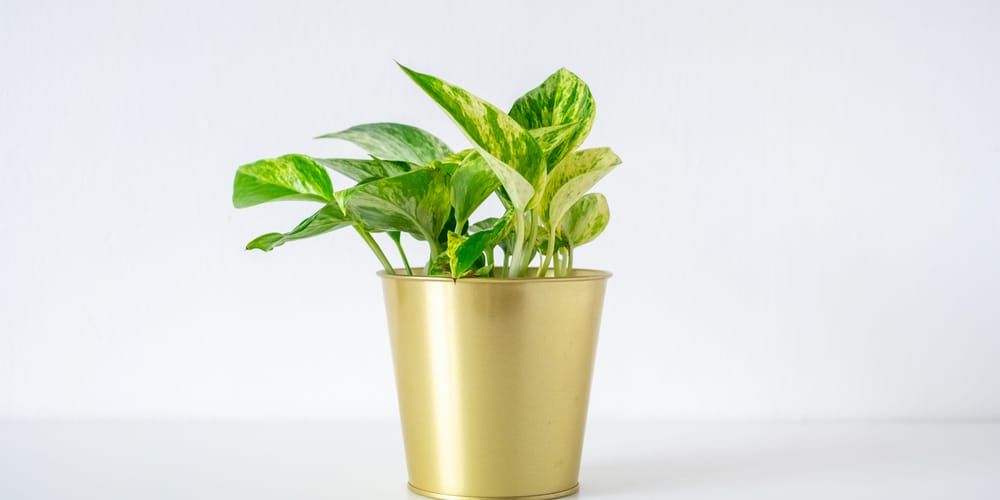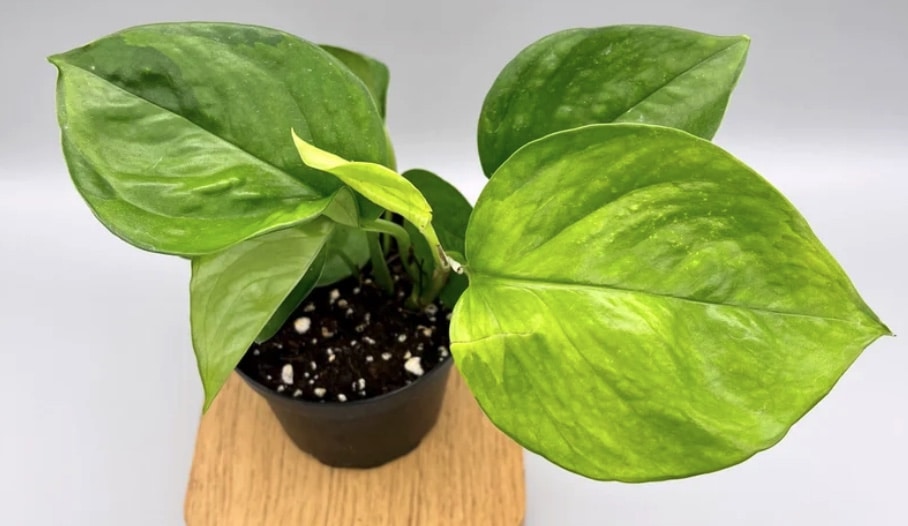You may have seen these stunning plants all over your Pinterest: they can help make a statement with your interior design and are easy to grow at home. We are talking about the Pothos plant, with its dark green heart-shaped leaves that come with different color variegations. Not only are these plants attractive, but they are also one of the few tropical species that don’t require much attention from your side.
You can be creative when choosing to add a Pothos in your house. You can select from various cultivars, including the Golden and Marble versions (which are arguably the most impressive ones). Just like in the wild, where pothos plants climb up tree trunks, you can train your specimens to grow vertically at home too! Under ideal conditions, these plants will thrive and showcase all of their beauty. They can grow large: some varieties come to measure more than 10 feet in height.
While they fall under the low-maintenance plant category, you still have to ensure you provide them with proper care. One of the biggest concerns of people trying to create a little jungle indoors is the frequency of watering plants. While Pothos don’t require much water to survive, you’ll still want to make sure you give them the right amount. To learn how often to water Pothos, keep reading this essential guide.
Care and Maintainance

Pothos is a popular choice of indoor plants among beginners. While not fussy about the location, this plant thrives in bright spots that receive plenty of indirect light. Despite being tropical plants, they do well in any humidity conditions. There is no need to purchase a humidifier or spray leaves constantly.
If you can, avoid exposing your Pothos to temperatures below 60 degrees F: it will likely not survive. In terms of soil, as long as you select a well-draining potting mix rich in organic matter, you’ll be fine. Consider adding perlite or lava rocks to increase aeration and water retention.
The watering frequency for Pothos depends on the season, the temperature, the plant size, the type of mixture you selected, and the container you placed your plant in.
While you don’t have to make it complicated, following a consistent and regular watering schedule will help you maintain your plant at its optimal conditions and help it thrive. Read the following section to explore all you need to learn about how often to water Pothos.
How Often Should You Water Pothos: Water Requirements
There are no strict rules regarding how to water your Pothos plants: you can do it from above, below, or even using a self-watering pot. What matters is how frequently and how much you water them.
As a rule of thumb, when the daily temperatures start to rise, it is time for you to increase the times per week you water your plant. For a medium-sized pot watering, two to three days a week will be more than enough.
If you live in a warm region with low humidity, you may have to water your plant more often. In that case, you may also want to purchase a humidifier to help raise your house’s humidity. However, that is not necessary for your plant’s survival.
During the wintertime, your Pothos will go dormant and require much less water. Take care to keep from overwatering your pothos. Adding one inch of water every two weeks will do the trick. Ensure you don’t use cold or hot water to prevent your plant from suffering temperature shock.
You can check if your plant needs more water by feeling the soil. Poke a finger or a wooden stick on it: if it comes out dry, even when you push it a couple of inches down, you need to refresh your plant with some water.
How Often Should You Water Pothos: Conclusion
As you may expect, smaller plants don’t need as much water as larger ones. Make sure you use a container with a drainage hole to allow the roots to absorb water at their pace.
In general, you can water your Pothos once a week under standard conditions. Bigger plants require water every five or six days on average. For best results, water in the morning or evening to increase water absorption and make sure your plant will take all it needs before it gets colder in the night.
